Although some people think that blockchain is a solution to problems in the morning and evening, there is no doubt that this innovative technology is a miracle in computer technology. So, what exactly is the blockchain?
Blockchain
The digital book of the transaction is publicly recorded in chronological order in bitcoin Bitcoin or other cryptocurrency.
More generally, it is a public database, the new data is stored in a container called a block block, and added to an immutable chain chain (hence the blockchain blockchain). The previously added data is also in the chain. For Bitcoin or other cryptocurrencies, this data is a group of transactions, but it can be any other type of data.
Blockchain technology brings new, fully digital currencies such as Bitcoin and Litecoin, which are not managed by any central organization. This gives freedom to those who believe that today's banking system is a scam and will eventually fail. The blockchain has also revolutionized the technical form of distributed computing. For example, Ethereum in Ethereum introduced an interesting concept: smart contract smart contract.
In this article, I will implement a simple blockchain with less than 50 lines of Python 2.x code, which I call SnakeCoin.
Blockchain with less than 50 lines of code
We will start by defining what our block is. In the blockchain, each block is stored with the timestamp and an optional index. In SnakeCoin, we store both. To ensure the integrity of the entire blockchain, each block will have a self-identifying hash. As in Bitcoin, the hash of each block is the cryptographic hash of the block's index, timestamp, data, and hash of the previous block. The "data" mentioned here can be any data you want.
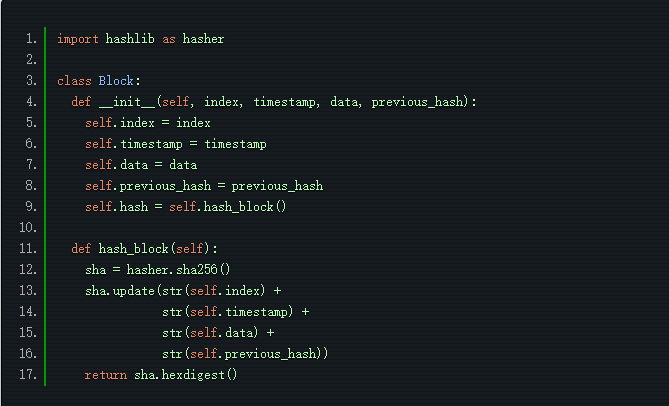
Awesome, now we have the structure of the block, but we need to create a blockchain. We need to add the block to an actual chain. As we mentioned before, each block requires information from the previous block. But the question is, where is the first block in the blockchain? Well, this first block, also known as the Creations block, is a special block. In many cases, it is added manually or through unique logic.
We will create a function to simply return a creation block to solve this problem. The index of this block is 0, which contains some arbitrary data values, and its "previous hash value" parameter is also an arbitrary value.

Now that we can create the creation block, we need a function to generate the successor block in the blockchain. This function takes the previous block in the chain as a parameter, creates data for the block to be generated, and returns the new block with the corresponding data. The hash of the new block comes from the previous block, so each new block improves the integrity of the blockchain. If we don't do this, it's easy for external participants to “change the past†and replace our chain with their new chain. This hash chain acts as a proof of encryption and helps ensure that once a block is added to the chain, it cannot be replaced or removed.

This is the main part.
Now we can create our own blockchain! Here, this blockchain is a simple Python list. Its first element is our creation block, and we will add subsequent blocks. Since SnakeCoin is a very small blockchain, we only added 20 blocks. We do it through a loop.
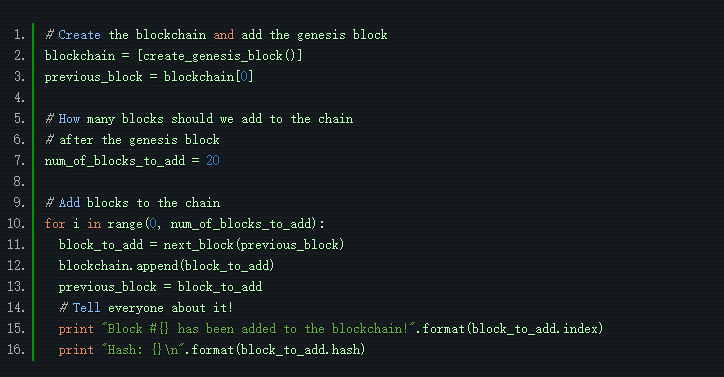
Let us look at our results:
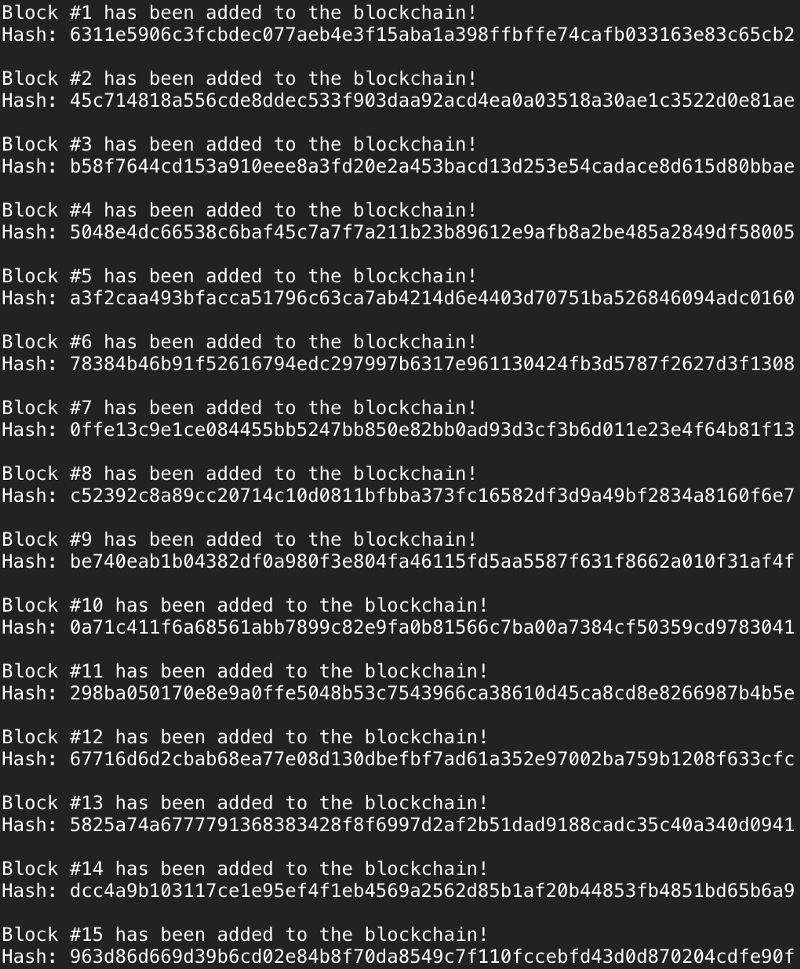
Don't worry, it will always be added to 20 blocks
Very good, our blockchain can work. If you want to see more information on the console, you can edit its full source code and output a timestamp or data for each block.
This is what SnakeCoin has. To make SnakeCoin reach the height of today's product-level blockchain, we need to add more features, such as the server layer, to track chain changes on multiple machines and limit them to the Workload Proof Algorithm (POW). The number of blocks that can be added during a given time period.
Let this pole block chain become slightly larger
This tiny blockchain is simple and naturally easy to accomplish. But because of its simplicity, it also brings some defects. First of all, SnakeCoin can only run on a single machine, so it is far from distributed, not to mention decentralization. Second, the speed at which blocks are added to the blockchain is as fast as creating a Python object on the host and adding it to the list. In our simple blockchain, this is not a problem, but if we want SnakeCoin to be an actual cryptocurrency, we need to control the number of blocks (and coins) that can be created in a given time.
From now on, the "data" in SnakeCoin will be transaction data, and the "data" field of each block will be a list of some transaction information. Then let's define the "transaction". Each "transaction" is a JSON object that records the sender, recipient, and number of transferred SnakeCoins. Note: The transaction information is in JSON format, which I will explain shortly.

Now that we know what the transaction information looks like, we need a way to add it to a computer (called a node) in our blockchain network. To do this, we'll create a simple HTTP server so that each user can let our nodes know that a new transaction has occurred. The node can accept the POST request and request the data to be the transaction information as above. This is why transaction information is in JSON format: we need them to be passed to the server in the request information.
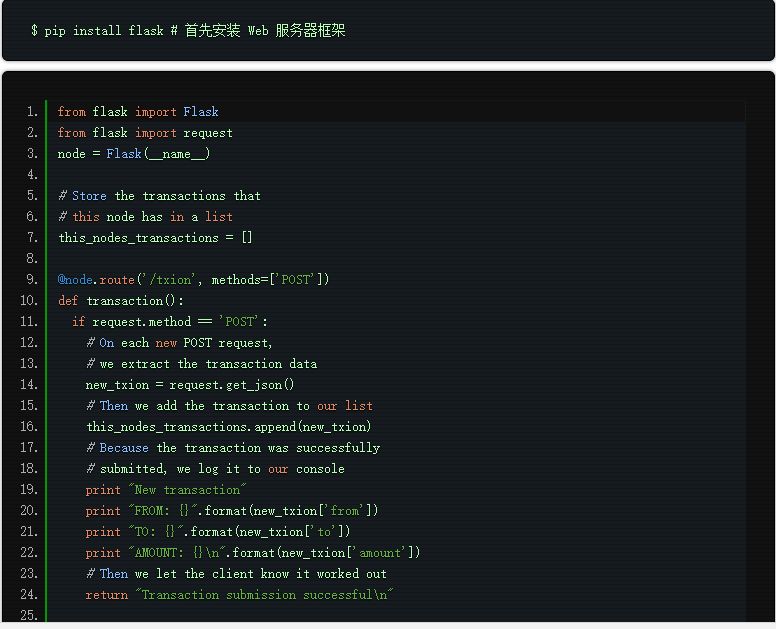
Awesome! Now we have a way to save records where users send SnakeCoins to each other. This is why people refer to blockchain as a common, distributed ledger: all transaction information is stored for everyone and stored on each node of the network.
However, there is a question: Where do people get SnakeCoin from? There is no way to get it yet. There isn't a thing called SnakeCoin because we haven't created and distributed any coins yet. To create a new coin, people need to "dig" a new SnakeCoin block. When they successfully dig into the new block, they create a new SnakeCoin and reward it to the person (miner) who digs out the block. Once the mining miner sends SnakeCoin to someone else, the coin is circulated.
We don't want to dig up the new SnakeCoin block too easily, because it will cause too many SnakeCoins, and its value will be lower; likewise, we don't want to make it too difficult, because if there is not enough coins for everyone to use They are too expensive for us. In order to control the difficulty of dug the new SnakeCoin block, we will implement a Proof-of-Work (PoW) algorithm. Proof of work is basically an algorithm that is difficult to generate a project, but easy to verify (its correctness). This project is called "proof" and sounds like it proves that the computer has performed a certain amount of work.
In SnakeCoin, we created a simple PoW algorithm. To create a new block, the miner's computer needs to increment a number. When the number is divisible by 9 (the number of letters in the word "SnakeCoin"), this is the proof number of the last block, and a new one will be dug. The SnakeCoin block, and the miner will get a new SnakeCoin.
We are almost finished. After running the full SnakeCoin server code, you can run the following code on your terminal. (assuming you have cCUL installed).
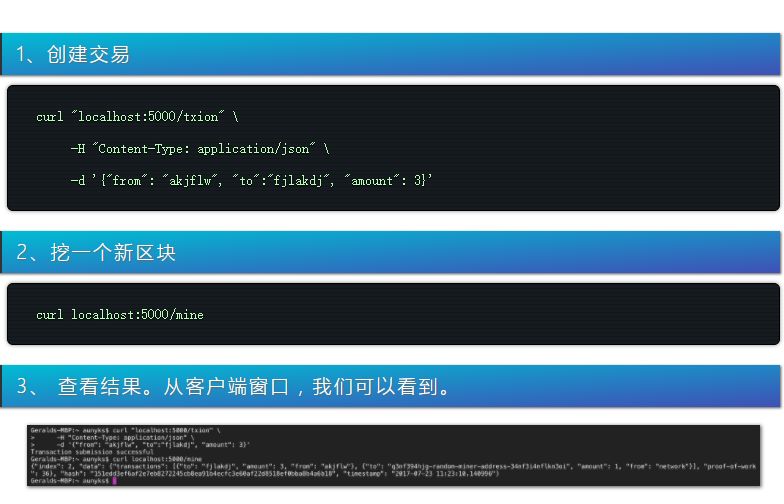
To make a beautification of the code, we see the information of the new block we got after mining:
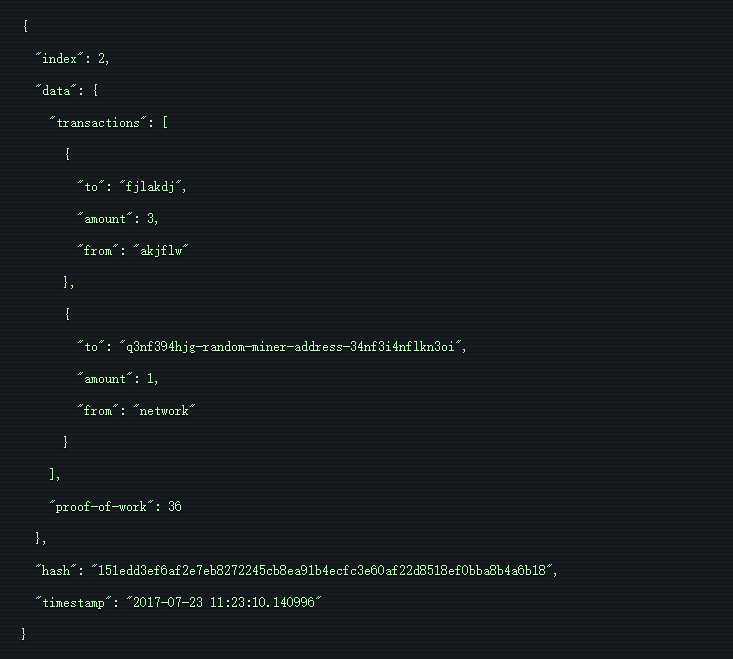
You're done! Now SnakeCoin can run on multiple machines, creating a network, and the real SnakeCoin can be dug up.
You can modify the SnakeCoin server code to your liking and ask questions.
Flat Control Cable Also known as festoon cable, this flat cable fits in confined spaces such as overhead cranes and hoists. It sends signal and data to operate, measure, or regulate automated equipment.
Raw cable can be UL2651, UL20251 ,etc
Flat cable, IDC cable, flat cable wiring, ribbon cable harness, flexible flat cable
ETOP WIREHARNESS LIMITED , https://www.etopwireharness.com
